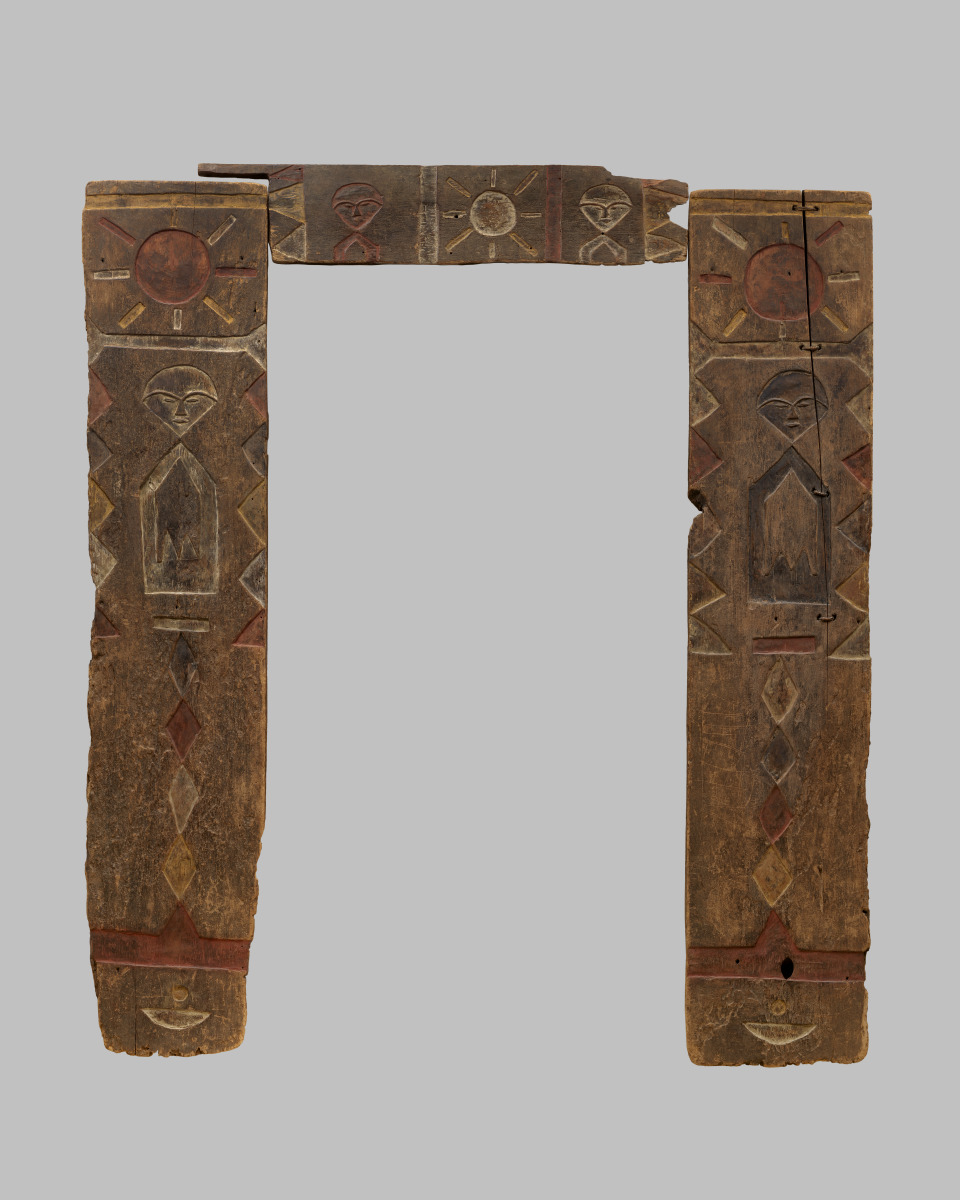
Bwiti Cult House Doorframe (Primary Title)
Door Frame and Lintel (Alternate Title)
Unknown (Artist)
Entering an ebandza—the Bwiti house of ritual at the center of a Tsogo village—involved passing through a richly symbolic doorway covered with images like the ones on these two jambs and lintel. Bwiti is a system of beliefs, initiations, and moral philosophy around which Tsogo life is based. It probably originated with the Tsogo and has spread widely through Gabon, especially to the Kota and the Fang peoples. Central to Bwiti’s practice is ingestion of iboga, a hallucinogen made from the bark of the Tabernanthe iboga tree. It is administered to new initiates so they can “leave their bodies,” both to see themselves and to communicate with the ancestors. During this process, initiates are closely supervised by a diviner and by an initiation “mother” and “father.” The four colors on the door—black, red, white, and yellow—match the four colors of the Kongo dikenga, the symbol of the life cycle around which this gallery is organized. Elongated diamond shapes are viewed as canoes that transport the soul of the initiate from birth to death. These and other geometric motifs on the doorframe may refer to the geometric patterns and fractal visions that initiates experience when they close their eyes while hallucinating. The sun (at the top) and moon (crescents at the bottom) are also prominent on these “doors of life” and symbolize gender, the sun being male, the moon female. The three suns likely refer to the three days of rituals that new Bwiti initiates undergo. The goal is emotional and spiritual rebirth for the young initiates, usually between age eight and thirteen, so they can take their place as adults in Tsogo society.
From the Robert and Nancy Nooter Collection, Adolph D. and Wilkins C. Williams Fund
Image released via Creative Commons CC-BY-NC
Some object records are not complete and do not reflect VMFA's full and current knowledge. VMFA makes routine updates as records are reviewed and enhanced.

